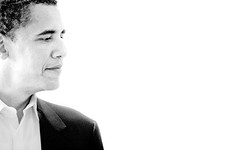 DNA is the blueprint of all life, giving instruction and function to organisms ranging from simple one-celled bacteria to complex human beings. Now Northwestern University researchers report they have used DNA as the blueprint, contractor and construction worker to build a three-dimensional structure out of gold, a lifeless material.
DNA is the blueprint of all life, giving instruction and function to organisms ranging from simple one-celled bacteria to complex human beings. Now Northwestern University researchers report they have used DNA as the blueprint, contractor and construction worker to build a three-dimensional structure out of gold, a lifeless material.
Using just one kind of nanoparticle (gold) the researchers built two common but very different crystalline structures by merely changing one thing -- the strands of synthesized DNA attached to the tiny gold spheres. A different DNA sequence in the strand resulted in the formation of a different crystal.
The technique, to be published in the journal Nature, and reflecting more than a decade of work, is a major and fundamental step toward building functional "designer" materials using programmable self-assembly. This "bottom-up" approach will allow scientists to take inorganic materials and build structures with specific properties for a given application, such as therapeutics, biodiagnostics, optics, electronics or catalysis.
Most gems, such as diamonds, rubies and sapphires, are crystalline inorganic materials. Within each crystal structure, the atoms have precise locations, which give each material its unique properties. Diamond's renowned hardness and refractive properties are due to its structure -- the precise location of its carbon atoms.
In the Northwestern study, gold nanoparticles take the place of atoms. The novel part of the work is that the researchers use DNA to drive the assembly of the crystal. Changing the DNA strand's sequence of As, Ts, Gs and Cs changes the blueprint, and thus the shape, of the crystalline structure. The two crystals reported in Nature, both made of gold, have different properties because the particles are arranged differently.
"We are now closer to the dream of learning, as nanoscientists, how to break everything down into fundamental building blocks, which for us are nanoparticles, and reassembling them into whatever structure we want that gives us the properties needed for certain applications," said Chad A. Mirkin, one of the paper's senior authors and George B. Rathmann Professor of Chemistry in the Weinberg College of Arts and Sciences, professor of medicine and professor of materials science and engineering. In addition to Mirkin, George C. Schatz, Morrison Professor of Chemistry, directed the work.
By changing the type of DNA on the surface of the particles, the Northwestern team can get the particles to arrange differently in space. The structures that finally form are the ones that maximize DNA hybridization. DNA is the stabilizing force, the glue that holds the structure together. "These structures are a new form of matter," said Mirkin, "that would be difficult, if not impossible, to make any other way."
He likens the process to building a house. Starting with basic materials such as bricks, wood, siding, stone and shingles, a construction team can build many different types of houses out of the same building blocks. In the Northwestern work, the DNA controls where the building blocks (the gold nanoparticles) are positioned in the final crystal structure, arranging the particles in a functional way. The DNA does all the heavy lifting so the researchers don't have to.
Mirkin, Schatz and their team just used one building block, gold spheres, but as the method is further developed, a multitude of building blocks of different sizes can be used -- with different composition (gold, silver and fluorescent particles, for example) and different shapes (spheres, rods, cubes and triangles). Controlling the distance between the nanoparticles is also key to the structure's function.
"Once you get good at this you can build anything you want," said Mirkin, director of Northwestern's International Institute for Nanotechnology.
"The rules that govern self-assembly are not known, however," said Schatz, "and determining how to combine nanoparticles into interesting structures is one of the big challenges of the field."
The Northwestern researchers started with gold nanoparticles (15 nanometers in diameter) and attached double-stranded DNA to each particle with one of the strands significantly longer than the other. The single-stranded portion of this DNA serves as the "linker DNA," which seeks out a complementary single strand of DNA attached to another gold nanoparticle. The binding of the two single strands of linker DNA to each other completes the double helix, tightly binding the particles to each other.
Each gold nanoparticle has multiple strands of DNA attached to its surface so the nanoparticle is binding in many directions, resulting in a three-dimensional structure -- a crystal. One sequence of linker DNA, programmed by the researchers, results in one type of crystal structure while a different sequence of linker DNA results in a different structure.
"We even found a case where the same linker could give different structures, depending on the temperatures at which the particles were mixed," said Schatz.
Using the extremely brilliant X-rays produced by the Advanced Photon Source synchrotron at Argonne National Laboratory in combination with computational simulations, the research team imaged the crystals to determine the exact location of the particles throughout the structure. The final crystals have approximately 1 million nanoparticles.
"It took scientists decades of work to learn how to synthesize DNA," said Mirkin. "Now we've learned how to use the synthesized form outside the body to arrange lifeless matter into things that are useful, which is really quite spectacular."
The Nature paper, entitled "DNA-programmable nanoparticle crystallization" is to be published January 31, 2008. In addition to Mirkin and Schatz, other authors are Sung Yong Park, a former postdoctoral fellow in Schatz's lab and now at the University of Rochester (lead author); graduate student Abigail K. R. Lytton-Jean, Northwestern University; Byeongdu Lee, Advanced Photon Source, Argonne National Laboratory; and Steven Weigand, Northwestern's DND-CAT Synchrotron Research Center at Argonne's Advanced Photon Source.


















